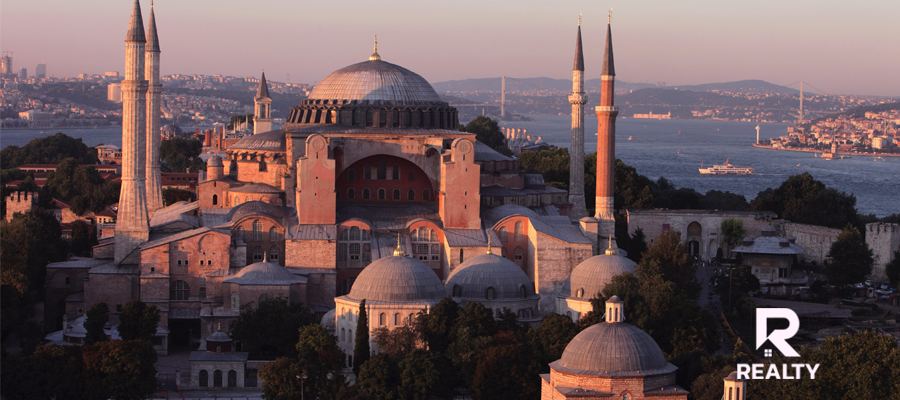
MIDDLE EASTERN ARCHITECTURE IN CYPRUS
- 2025-01-06
Cyprus, located on the southeastern edge of the Mediterranean, boasts a remarkable architectural history spanning thousands of years. From ancient settlements dating back to 7,000 BC to the remnants of various civilizations, including Phoenician, Assyrian, Egyptian, and Persian rulers, the island is a treasure trove of architectural diversity. Its landscape showcases influences from the Classical, Hellenistic, and Roman periods, as well as a rich medieval past characterized by Byzantine churches, Gothic and Venetian monuments, and Ottoman mosques and palaces. The amalgamation of these architectural marvels creates a captivating and multilayered mosaic that reflects the island's diverse architectural histories.
Historical Background
Cyprus has a strong historical and geographical connection to the Middle East. Throughout thousands of years, the island has been closely intertwined with significant events in the Near and Middle East.
The story of Cyprus begins with its colonization by Greek settlers during the Bronze Age. Over time, it witnessed conquests by various powers such as the Assyrians, Persians, Phoenicians, Ptolemaic Egypt, and the Romans. Following the division of the Roman Empire, Cyprus became part of the Byzantine Empire, specifically the Eastern Roman Empire. The rise of Islam in the seventh century led to regular raids by Muslim Arabs on the island. Subsequently, Cyprus returned to Byzantine rule until the 12th century when it was conquered by King Richard the Lionheart during his journey to the Second Crusade.
In 1571, the Ottoman Empire took control of the island, and Cyprus remained under Ottoman rule until 1878 when Britain assumed administrative responsibility. Throughout this complex history, Cyprus experienced a series of transitions and shifts in governance, highlighting its close connection to the Middle East.
Architectural Elements
Traditional Middle Eastern architecture stands out through its geometric patterns, use of natural materials, arches and domes, courtyards and gardens, play of light and shadow, and a focus on community and hospitality. These elements come together to create a captivating architectural style that celebrates both aesthetics and functionality. Moreover, Middle Eastern architecture is not only visually pleasing but also practical, incorporating open spaces to facilitate airflow in the region's hot climate.
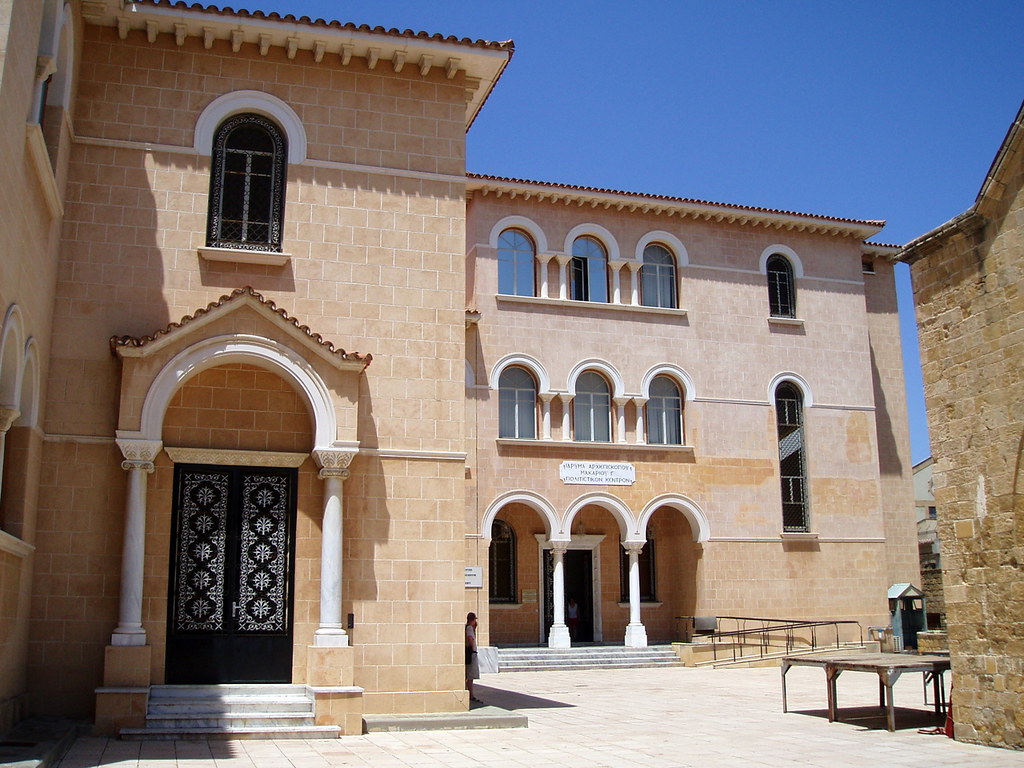
As for Cyprus, it is worth noting that among the many styles of Middle Eastern architecture in the neighborhood, the Ottoman type is the most established.
Before looking at the influence of Middle Eastern architecture on Cyprus, let's analyze the main features of Cypriot houses:
- Architecture is an integral part of Cypriot tradition. Within Cypriot houses, a notable feature was the "dichoro" or two-room layout. The dichoro served as a multi-functional space, functioning as both a living room and a bedroom, sometimes even doubling as a dining area. It often housed the "armarola," a cupboard intricately carved in the shape of an eagle, and the "souvantza," a decorative element adorned with pots and jugs that could be found in all village houses.
- Cypriot houses featured iron beds embellished with golden apples, with the upper part of the bed covered in white materials. Surrounding the bed, a mosquito net was commonly employed to provide protection during sleep.
- The main characteristic of Cypriot folklore architecture is that houses were constructed only with the necessary areas in mind. This practical approach highlights the efficiency and functionality that were valued by the Cypriot people when building their homes.
Residential Architecture
The Ottoman Empire exerted a significant influence on the architecture of Cyprus during its rule from the 16th century until the island came under British administration in 1878. This influence can be observed in the residential buildings of Cyprus, particularly in the traditional Ottoman houses found in various regions of the island.
Traditional Ottoman houses in Cyprus typically featured distinct architectural elements, such as inner courtyards, wooden latticework, and colorful exteriors. These houses were designed to provide privacy, protection from the hot climate, and reflect the social and cultural customs of the time.
When it comes to regions in Cyprus where Ottoman-style houses can still be found, the Old Town of Nicosia and Famagusta are particularly noteworthy.
Religious Structures
The religious structures in Cyprus, including mosques and churches, stand as testaments to the island's diverse cultural heritage. The architectural resemblances to Middle Eastern counterparts are a result of historical interactions and cultural influences.
Examples of buildings of Middle Eastern architecture and their main features
Walking around Cyprus, you can witness the significant architectural diversity that fills this island country. Below, we suggest delving into a more detailed discussion about the most remarkable representatives of such architecture.
Kolossi Castle
Kolossi Castle, situated on the southwestern edge of Kolossi village, stands as a testament to the rich history of Cyprus. This former stronghold of the Crusaders, located 14 kilometers (9 miles) west of the city of Limassol, holds great significance both strategically and architecturally. In the Middle Ages, it played a vital role in the region and was renowned for its involvement in the production of sugar, a major export of Cyprus during that era.
The origins of Kolossi Castle trace back to the early 13th century, around 1210, when the Frankish military commenced its construction. King Hugh I granted the land of Kolossi to the Knights of the Order of St John of Jerusalem, also known as the Hospitallers. Under their stewardship, the castle began to take shape, serving as a stronghold and a center for sugar production.
However, it was not until the 15th century that the castle, as we see it today, emerged. In 1454, the Hospitallers, led by Commander Louis de Magnac, undertook extensive renovations and expansions, solidifying Kolossi Castle's imposing presence. The castle's walls proudly bear the coat-of-arms of Louis de Magnac, intricately carved to commemorate his leadership and contributions to the structure.
The history of Kolossi Castle is not without its share of conflicts and power struggles. In 1306, the Knights Templar, a rival faction within the Crusader Kingdom of Cyprus, seized control of the castle. However, their reign was short-lived, as in 1313, following the dissolution of the Templars, the castle was returned to the Hospitallers, ensuring its continued significance and prominence in the region.
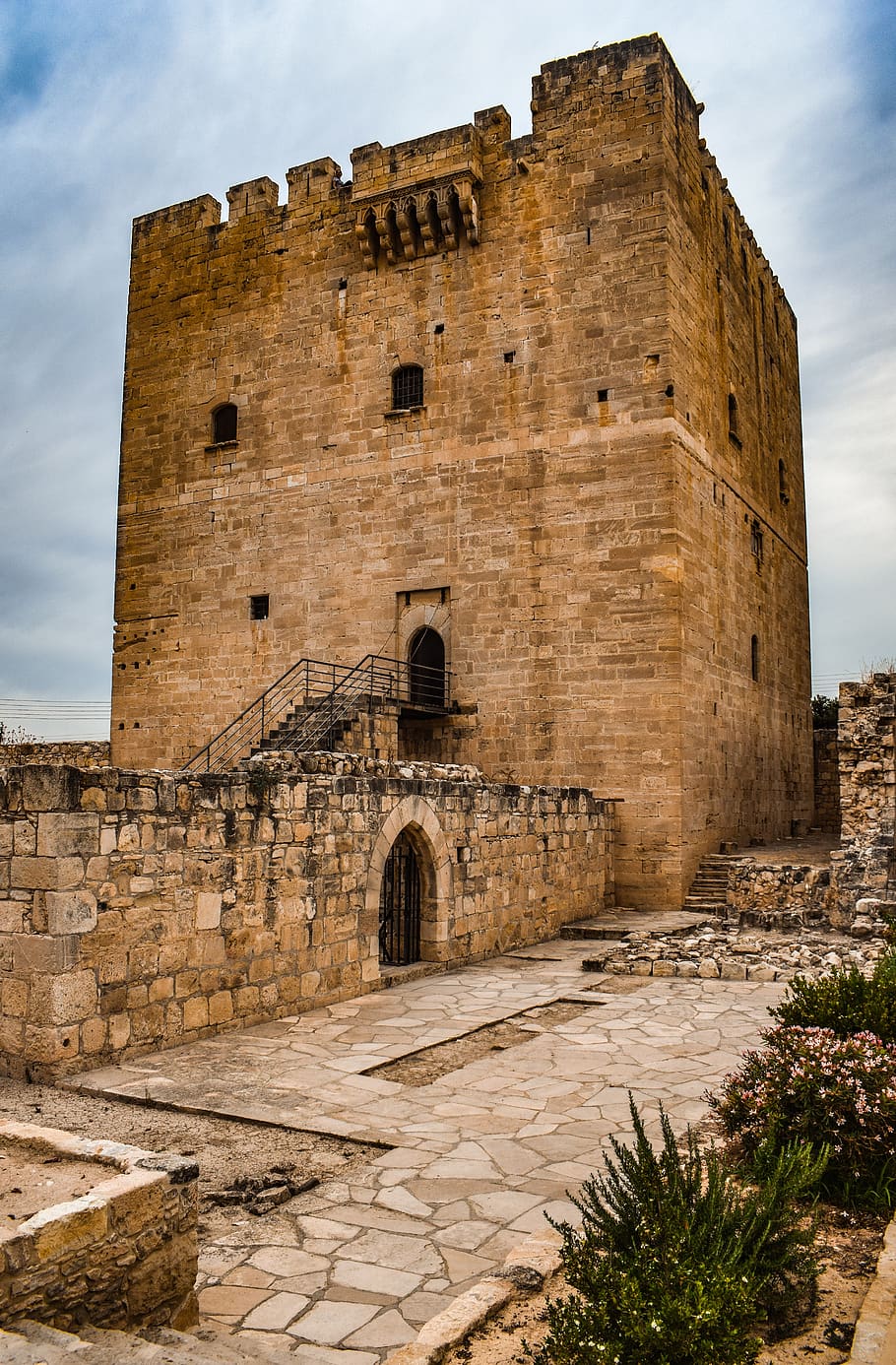
As one approaches Kolossi Castle today, its impressive silhouette dominates the landscape. The castle consists of a single three-storey keep, which serves as the central structure, evoking a sense of strength and fortitude. Adjacent to the keep is a rectangular enclosure, known as a bailey, encompassing an area of approximately 30 by 40 meters (98 by 131 feet). This bailey adds an additional layer of defense to the castle, enhancing its strategic value during turbulent times.
Exploring the interior of Kolossi Castle is like stepping back in time. The chambers and halls reveal remnants of its historical functions, providing glimpses into the castle's past as a military stronghold and a hub of sugar production. While the castle's original purpose may have evolved over time, its architectural grandeur remains intact, capturing the imagination of visitors who wander through its halls.
The allure of Kolossi Castle extends beyond its walls. The surrounding landscape, with its picturesque views and lush greenery, adds to the overall charm of this historical site. As one stands within the castle grounds, the echoes of the past resonate, telling stories of knights, crusaders, and the vibrant medieval life that once thrived within its protective embrace.
Kolossi Castle stands as a captivating symbol of Cyprus's medieval history. From its early construction in the 13th century to the renovations carried out by the Hospitallers in the 15th century, the castle has witnessed power shifts, conflicts, and the changing fortunes of the island. Today, it stands as a proud reminder of the island's architectural and historical heritage, inviting visitors to explore its storied past and marvel at its enduring beauty.
The Church of Saint Lazarus
The Church of Saint Lazarus in Larnaca, Cyprus, is a captivating and historically significant place of worship that traces its origins back to the late 9th century. As an integral part of the Church of Cyprus, an autocephalous Greek Orthodox Church, it holds immense religious and cultural importance.
Dedicated to Lazarus of Bethany, a prominent figure in the New Testament who was famously raised from the dead by Jesus, as recounted in the Gospel of John, the church pays homage to his miraculous story. According to Eastern Orthodox tradition, Lazarus fled from Judea following the Resurrection of Jesus due to alleged threats on his life and sought refuge in Cyprus. Paul the Apostle and Barnabas are believed to have appointed him as the first Bishop of Kition, present-day Larnaca. Lazarus is said to have lived for another thirty years and, upon his death, was buried for the final time in Larnaca. The Church of Agios Lazaros, or Saint Lazarus, was erected above his reputed tomb.
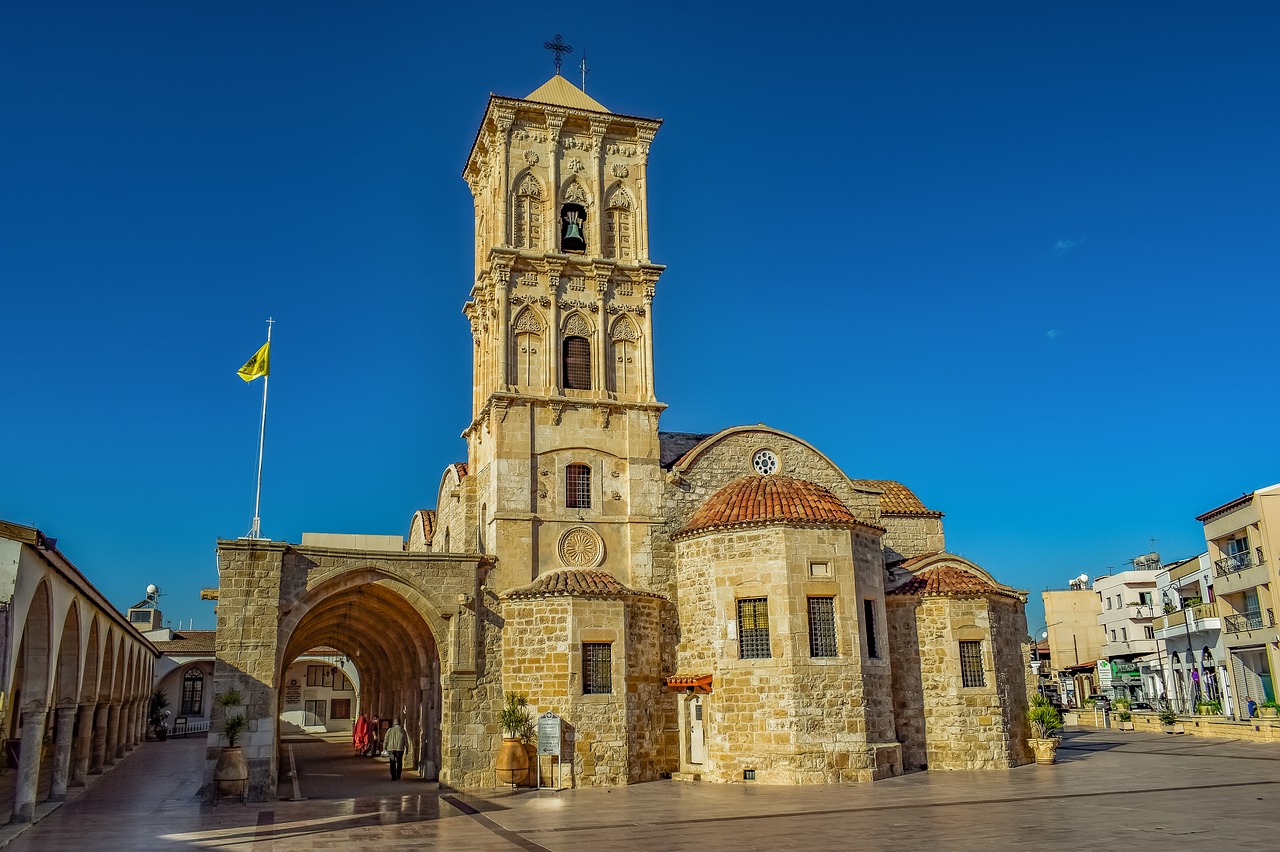
During the era of Arab rule that began in 649, the precise location of Lazarus' tomb was lost. However, in 890, a tomb bearing an inscription that read "Lazarus, four days dead, friend of Christ" was discovered in Larnaca. In 898, Emperor Leo VI of Byzantium ordered the transfer of Lazarus' remains to Constantinople, a momentous event annually celebrated by the Orthodox Church on October 17. This transfer was documented by Arethas, the Bishop of Caesarea. Tragically, the relics were later looted by the Fourth Crusade in the early 13th century and subsequently lost after being taken to Marseille.
To compensate for the relocation of Lazarus' remains, Emperor Leo sanctioned the construction of the Church of St. Lazarus above the tomb in the late 9th to early 10th centuries. This elongated structure measures 31.5 x 14.5 meters and features a tripartite sanctuary with semicircular apses both internally and externally. The central area encompasses a five-sided apse. Inside the church, three aisles are formed by sturdy double pillars with arched openings, with the central aisle supported by these pillars to bear the weight of the domes. The north and south aisles feature semi-cylindrical roofs intersected by cross-vaults. The walls are predominantly constructed from square limestone blocks, approximately one meter thick. An open porch with descending steps provides access to the interior.
During the period of Frankish and Venetian rule from the 13th to 16th centuries, the church underwent a transition and became Roman Catholic. A Gothic-style stone-covered portico, known as a stoa, was added to the south side during this period.
In the early years of Ottoman rule starting in 1571, the church's magnificent domes, along with the original bell tower, were destroyed, and the building was converted into a mosque. However, in 1589, the Ottomans sold the church back to the Orthodox community, possibly due to the presence of a Christian cemetery. Subsequently, the church served both Orthodox and Catholic congregations for two hundred years. Traces of Greek, Latin, and French inscriptions can still be found on the porch. In 1857, when the Ottoman authorities once again permitted Cypriot churches to have bell towers, the church's bell tower was reconstructed in a Latinate style.
The church boasts a remarkable baroque-style woodcarving known as the iconostasis, which separates the sanctuary from the nave. Created by Chatzisavvas Taliadorou between 1773 and 1782, it is a unique masterpiece. The iconostasis was later adorned with gold plating between 1793 and 1797. Some of the icons on the iconostasis were painted by Michael Proskynetes from Marathasa in the late 18th century. Icon painter Hatzimichael completed the iconography in 1797. The church also houses wood-carved furniture, including a Rococo pulpit originally used for Catholic services, as well as icons on the walls dating back to the 17th century.
Unfortunately, a fire in 1970 caused significant damage to the church's interior, including a section of the iconostasis and its corresponding icons. Subsequently, between 1972 and 1974, the iconostasis underwent partial restoration and was re-plated with gold. During subsequent renovation efforts, on November 2, 1972, human remains were discovered in a marble sarcophagus beneath the altar. These remains were identified as part of Lazarus' relics, suggesting that not all of them had been transferred to Constantinople.
Today, the Church of Saint Lazarus continues to serve as a place of worship, preserving the rich religious and cultural heritage of Cyprus. Its architectural splendor and spiritual significance attract visitors from around the globe, who come to explore its storied past, marvel at its beauty, and connect with centuries of faith and devotion.
Stavrovouni Monastery
The Stavrovouni Monastery is a Greek Orthodox monastery located on the Troodos Mountains in Cyprus. It is one of the most important religious sites in Cyprus and is said to have been founded by Helena, the mother of the Roman Emperor Constantine the Great.
The monastery is built on a steep cliff, 732 meters (2,401 ft) above sea level, and is surrounded by pine trees and other vegetation. The complex consists of a number of buildings, including the church, the refectory, the library, and the cells of the monks.
The church is the most important building in the monastery and is dedicated to the Holy Cross. It is a three-aisled basilica with a dome and is decorated with frescoes and icons. The most famous icon in the church is the Hodegetria icon, which is said to have been painted by Saint Luke the Evangelist.
The other buildings in the monastery are also of architectural interest. The refectory is a large hall where the monks eat their meals. It is decorated with murals depicting scenes from the Bible. The library contains a collection of manuscripts and books, some of which date back to the 12th century. The cells of the monks are simple rooms where they live and pray.
The Stavrovouni Monastery is a significant example of Byzantine architecture and is a popular tourist destination. It is also a place of pilgrimage for Christians from all over the world.
Here are some of the architectural elements that make the Stavrovouni Monastery unique:
- The location of the monastery on a steep cliff is significant because it symbolizes the monastery's isolation from the world and its dedication to God.
- The church is built in the three-aisled basilica style, which is a common form of Byzantine architecture. The dome of the church is a later addition, dating from the 12th century.
- The frescoes and icons in the church are of great artistic and religious significance. They depict scenes from the Bible and the lives of the saints.
- The refectory is a large hall with a vaulted ceiling. It is decorated with murals depicting scenes from the Bible.
- The library contains a collection of manuscripts and books, some of which date back to the 12th century. These manuscripts are valuable historical and cultural artifacts.
- The cells of the monks are simple rooms where they live and pray. They are located around the courtyard of the monastery.
- The Stavrovouni Monastery is a beautiful and historic place that is worth visiting. It is a reminder of the rich religious and cultural heritage of Cyprus.
Venetian Walls of Nicosia
The Venetian Walls, encircling the capital city of Nicosia in Cyprus, stand as an extraordinary testament to defensive architecture. While the original city walls were constructed during the Middle Ages, it was the Republic of Venice that undertook a comprehensive reconstruction in the mid-16th century. These walls remain remarkably intact and are celebrated as some of the finest examples of Renaissance fortifications in the Eastern Mediterranean. Today, they have become a prominent tourist attraction, drawing visitors from around the world.
Nicosia, along with Valletta in Malta and Palmanova in Italy, exemplifies the practical realization of an ideal Renaissance city. This reputation is owed not only to the robust fortifications but also to the vibrant urban life that flourished within its boundaries.
The first fortification in Nicosia traces its origins back to 1211, during the Lusignan period, with the construction of a castle. In 1368, King Peter I added a prominent tower known as Margarita Tower to the castle complex. Subsequently, Peter II expanded the fortifications, encircling the entire city and necessitating the demolition of Margarita Tower.
In 1489, Cyprus became a part of the Republic of Venice. While the Venetian governors recognized the need to fortify the city, little progress was initially made in enhancing its defenses. However, following the Great Siege of Malta in 1565, concerns about Ottoman expansion grew, leading numerous Christian states in the Mediterranean to strengthen their fortifications.
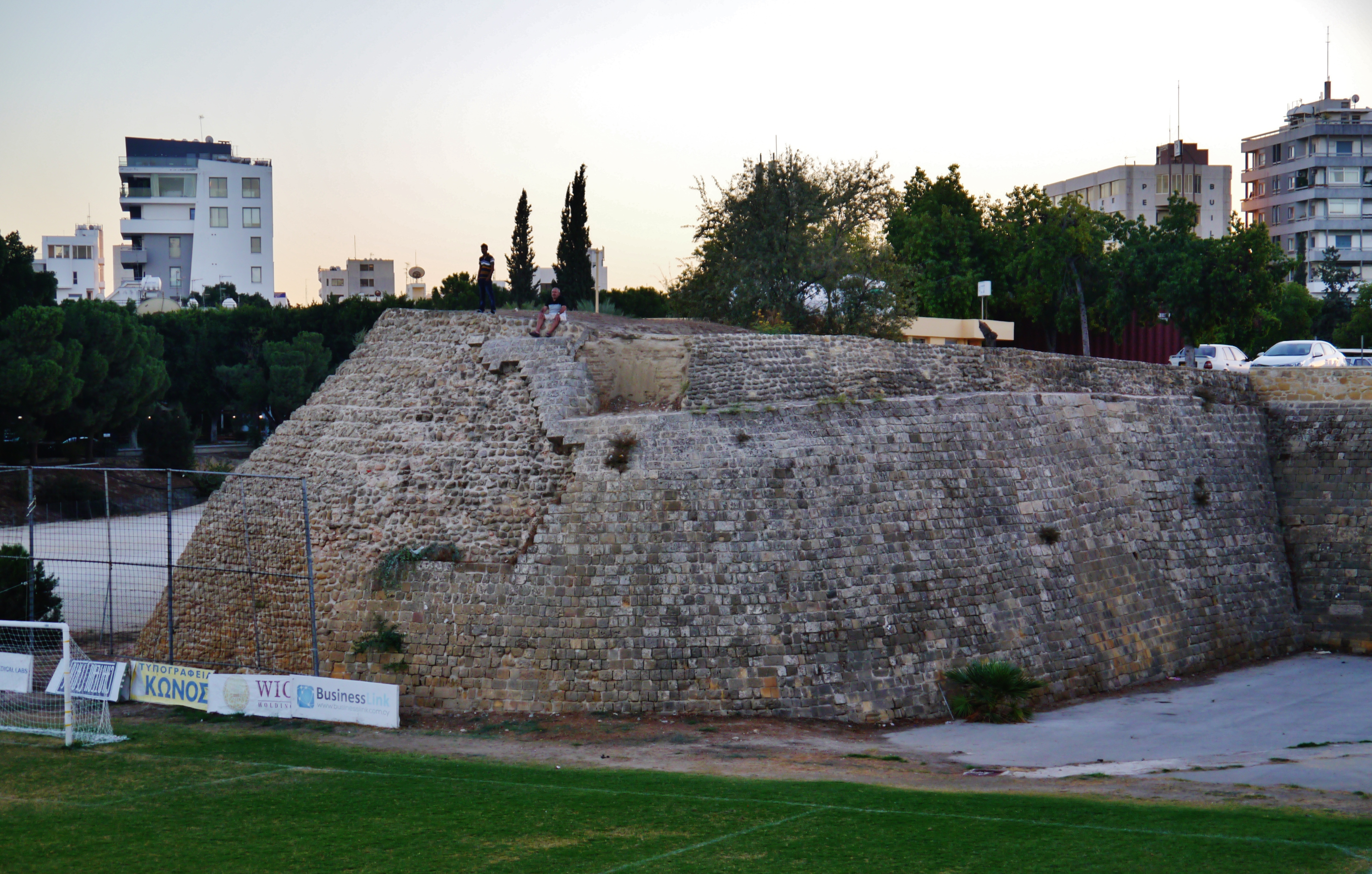
In 1567, the Venetians resolved to fortify Nicosia and sought the expertise of Italian military engineers Giulio Savorgnan and Francesco Barbaro to design the new defensive walls. The existing medieval fortifications, deemed inadequate by the engineers, were demolished to make way for the imposing new walls. In the process, several houses, churches, and palaces within and outside the city were razed to acquire materials for the construction and to ensure unobstructed views for defensive purposes. Simultaneously, the course of the Pedieos River was redirected outside the city, safeguarding residents from flooding and filling the moat surrounding the new walls.
However, during the construction of the fortifications, the Fourth Ottoman–Venetian War erupted. On July 1, 1570, the Ottomans, led by Piali Pasha, launched an invasion of Cyprus, commencing the siege of Nicosia on July 22. Despite valiant resistance, the city fell on September 9 when the Ottomans breached the wall at Podocattaro Bastion. Defenders were mercilessly slain, and the surviving inhabitants were captured.
After the siege, Lala Mustafa Pasha stationed a garrison of 4,000 soldiers and 1,000 cavalry within the city. Subsequently, Nicosia experienced a gradual decline. Although the Ottomans repaired the fortifications, by the early 17th century, they had fallen into disrepair and decay, leaving the city vulnerable and virtually defenseless.
Nonetheless, the city underwent a revival in the mid-19th century. When the British occupied Cyprus in 1878, Nicosia still remained enclosed within the walls. In 1879, an opening was created near Paphos Gate to enhance accessibility to the surrounding areas. Over the course of the 20th century, further openings were made within the walls, transforming the relationship between the fortified city and its surroundings.
Now, the Venetian Walls of Nicosia stand as magnificent remnants of a bygone era. They serve as a poignant reminder of the city's tumultuous history and a testament to the architectural prowess of the Renaissance period. As visitors explore the walls and delve into the stories they hold, they gain a deeper appreciation for the enduring legacy of this remarkable fortification.
Kourion
Curium (Kourion) in Cyprus is an exceptional archaeological site that attracts visitors with its rich historical and architectural significance. Located on a hillside near Limassol, Curium offers a glimpse into the past.
Once a formidable city kingdom, Curium showcases remarkable structures that continue to impress. The site features a grand theater, treasury, covered walkway (stoa), ancient Greek wrestling school (palaestra), temples, baths, market, circular "temenos," and the renowned temple of Apollo Hylates. These architectural marvels highlight the advanced skills of the ancient inhabitants.
Named after Kouriefs, a colonist, Curium was founded by Achaean settlers from Argos, as mentioned by Herodotus. The city's roots trace back to the 8th century BC, with the construction of a monument dedicated to Apollo Hylates, the god of forests. Inscriptions found at the site indicate that Apollo was revered as the protector of Curium until the 4th century AD.
The hill also houses remnants of a four-post temple, representing different eras from the end of the classical period to the early Christian era. This sanctuary once provided baths for athletes and featured an arena with a central courtyard surrounded by colonnades.
Over time, the temple underwent expansions and modifications, with two main construction phases. In ancient times, it had an open yard with a significant altar that held consequences for those who touched it without being priests. The Roman period brought damage to the sanctuary, but evidence of a circular monument with a cobbled floor suggests processions and dances around a sacred tree garden. The sanctuary was extended during the 6th century BC, and a devastating earthquake in 365 AD led to partial restoration efforts. Despite the city's decline, the worship of Apollo gradually waned as Christianity gained prominence.
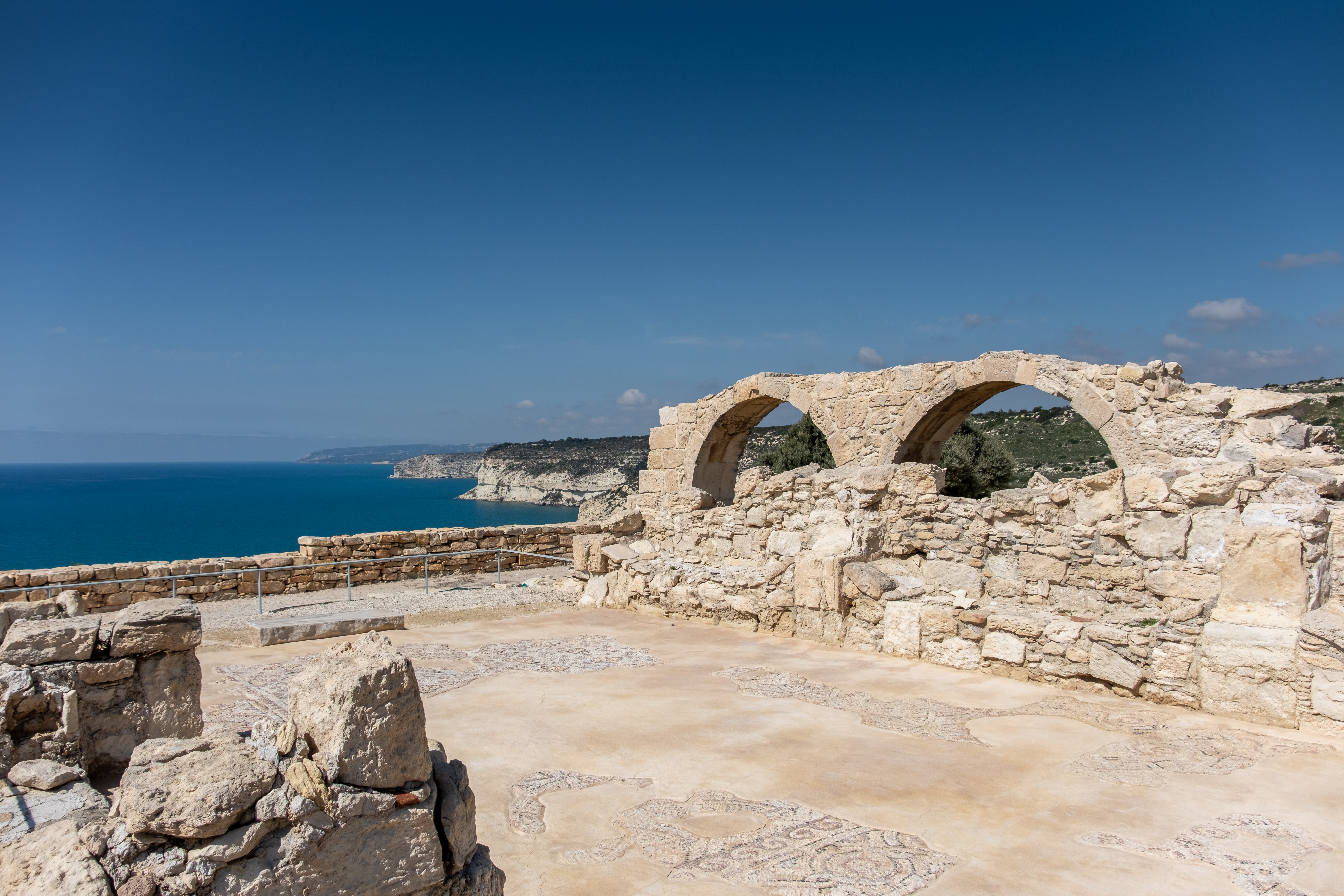
Curium faced further challenges when Arab raids forced its inhabitants to abandon their homes and relocate eastward. The surviving parts of the city were discovered and restoration work on the Temple of Apollo began in 1964.
Other notable structures at Curium include the Roman market, which underwent multiple changes throughout the centuries and featured bath complexes and a "nymphaeum." The House of Achilles, named after the Homeric hero, boasted intricate mosaics and served as a reception space for important visitors. Adjacent to it is the House of the Gladiators, showcasing mosaic representations of gladiators.
The theater, with its 3,500 seats, remains a cultural venue. Originally constructed in the 2nd century BC, it underwent modifications to accommodate spectacles such as beast fights. The enduring foundations of the stage provide a backdrop for captivating performances against the stunning sea view. The Early Christian Episcopal Basilica, dating back to the 5th century AD, holds significance as one of Cyprus' prominent early Christian sites. The stadium, built in the 2nd century AD, and the Small Basilica Outside the Walls, with its vestibule and peristyle atrium, add to the diversity of the site.
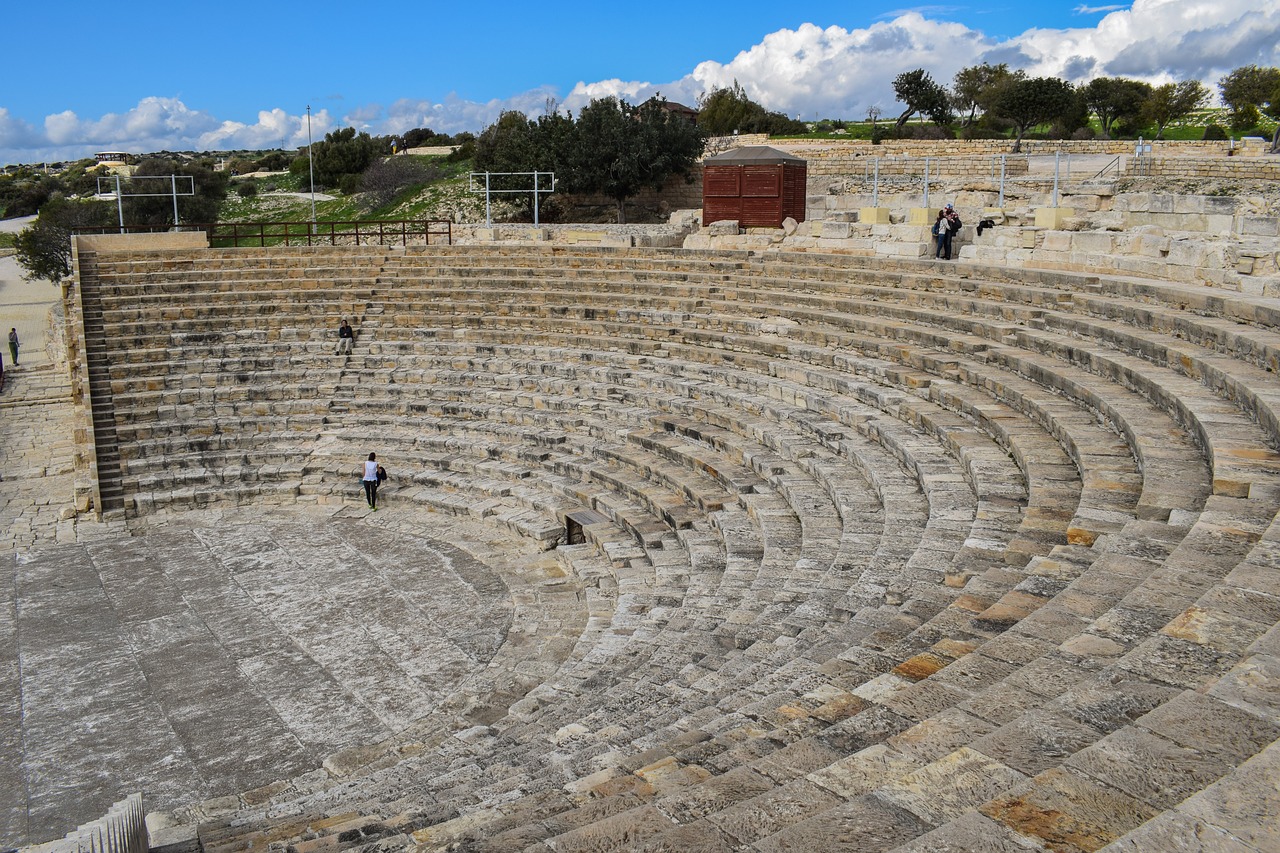
Curium offers visitors a captivating journey through time. Amidst the marble structures, breathtaking sea views, and a rich historical tapestry, one can explore the remnants of ancient, Roman, and Byzantine eras. This exceptional site stands as a testament to Cyprus' enduring legacy and the remarkable architectural achievements of its past inhabitants.
Kykkos Monastery
Nestled amidst the breathtaking Troodos Mountains at an impressive altitude of 1318 meters, Kykkos Monastery stands tall as one of Cyprus' most renowned and opulent monastic treasures. Its historical roots trace back to the 11th century, founded by the illustrious Byzantine emperor, Alexios I Komnenos. This revered landmark's legacy began when Emperor Alexios bestowed a precious icon of the Virgin Mary, believed to be painted by the Apostle Luke, upon a hermit named Esaias.
At the heart of Kykkos Monastery lies the revered icon of the Virgin Mary, a timeless relic preserved through the ages. Today, the icon, enrobed in silver and bejeweled in splendor, continues to awe and inspire all who journey to this sacred sanctuary. Despite enduring several destructive fires over the centuries, Kykkos Monastery has been steadfastly rebuilt, and its present structures stand as stunning testaments to the architectural brilliance of the 18th and 19th centuries.
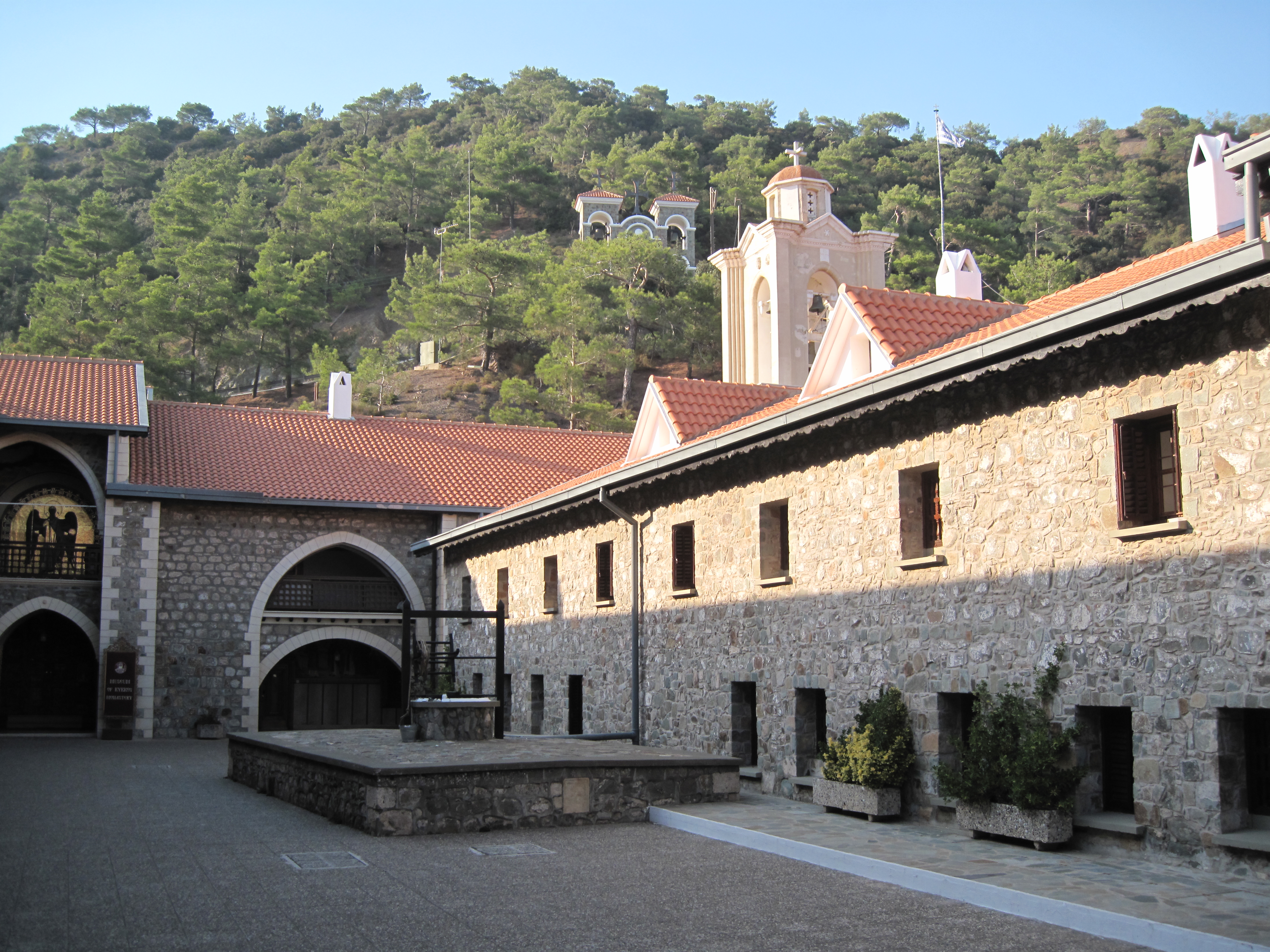
The centerpiece of this majestic complex is the grand basilica, a sight to behold, adorned with vibrant frescoes, mesmerizing mosaics, and iconic religious depictions. A masterpiece of artistry, the gilded wood iconostasis commands reverence with its intricate carvings, inviting visitors to immerse themselves in the profound spiritual ambiance. Beyond its architectural marvels, the monastery houses a fascinating museum, an invaluable treasure trove showcasing religious relics, ancient manuscripts, exquisitely crafted vestments, and a captivating array of other artifacts.
Kykkos Monastery holds a special place in the hearts of Orthodox Christians, serving as a hallowed destination for pilgrimage and worship, especially during the sacred feast days of the Virgin Mary on August 15th and September 8th. As devout believers gather to pay homage to the cherished icon, the air is permeated with devotion and solemnity, creating an atmosphere of transcendence and spirituality.
This iconic monastery also bears historical significance, as it once nurtured Archbishop Makarios III, who would later become the first president of Cyprus. A pivotal chapter in Cyprus' history unfolds within the walls of Kykkos Monastery, making it a revered site for locals and visitors alike.
For the curious traveler seeking a profound and enriching experience, Kykkos Monastery offers a spiritual odyssey back through the annals of time. Surrounded by the awe-inspiring natural beauty of the Troodos Mountains, the journey to this sacred site becomes an expedition of the soul, leaving an indelible mark on those who venture here.
Prepare to be captivated by the mystical allure of Kykkos Monastery, where history, art, and faith converge in a harmonious symphony. Whether you seek spiritual enlightenment or a brush with history, this sanctuary promises an unforgettable pilgrimage that will linger in your heart for years to come. Embrace the enchantment of Kykkos Monastery and discover a sanctuary that transcends time, beckoning you to explore the splendors of Cyprus' spiritual and cultural heritage.
House of Dionysus
The House of Dionysus, a remarkable 2nd-century Roman villa nestled in the scenic beauty of Paphos, Cyprus, stands as a cherished archaeological gem and a must-visit destination for history enthusiasts. This distinguished site has earned global recognition for its exceptional preservation and captivating mosaics, which vividly depict the revered god, Dionysus.
Perched gracefully upon a hill with sweeping views of the sea, the House of Dionysus is believed to have been the opulent residence of a wealthy Roman aristocrat. Its sprawling layout comprises a grand peristyle courtyard, several splendid reception rooms, and a series of intimate private apartments. The real highlight, however, lies within the peristyle courtyard and select reception rooms, where the mesmerizing mosaics come to life.
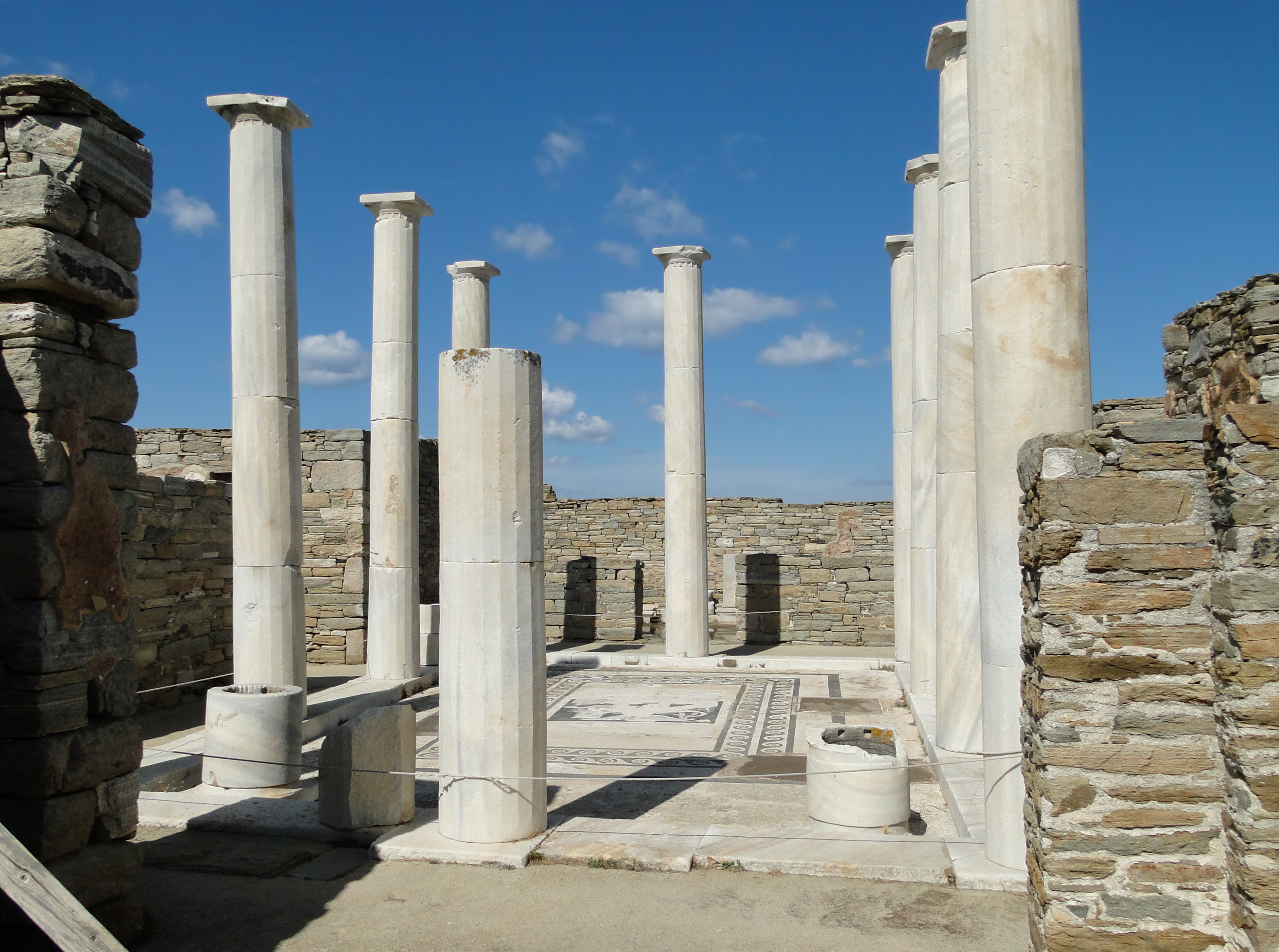
Reflecting the architectural norms of Roman villas from that era, the peristyle courtyard stands as a rectangular oasis, encircled by an elegant colonnade. The reception rooms, generously spacious with lofty ceilings and intricate mosaic floors, exude an aura of opulence and grandeur. In contrast, the private apartments, though smaller, evoke an intimate ambiance, hinting at the personal spaces of its illustrious inhabitants.
The pièce de résistance of the House of Dionysus is undoubtedly its awe-inspiring mosaics, considered among the finest examples of Roman mosaic art worldwide. Crafted with finesse, these mosaics showcase masterful arrangements of small, colored stones, depicting the captivating narratives of Dionysus, accompanied by his devoted followers and various other mythological figures. Their meticulous detail and lifelike portrayal offer a captivating glimpse into the religious and cultural fabric of Roman life in Cyprus.
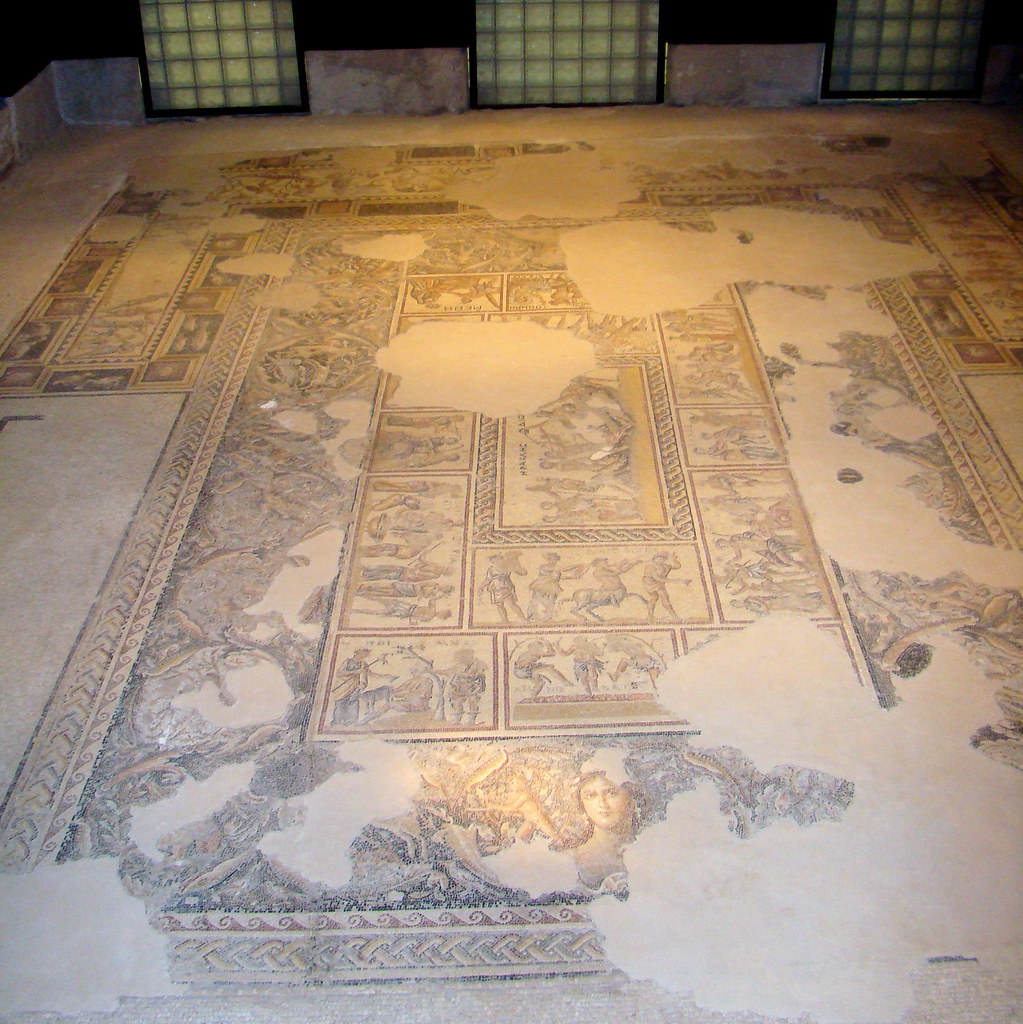
As an invaluable archaeological site, the House of Dionysus unravels the captivating story of Roman presence and influence on the island of Cyprus. This captivating historical treasure also doubles as a serene and picturesque escape, beckoning visitors to bask in its beauty and immerse themselves in the allure of antiquity.
Recognized as a UNESCO World Heritage Site, the House of Dionysus has garnered global acclaim and lures countless tourists seeking to unravel the secrets of the past. Stepping into this remarkable villa is akin to stepping back in time, where the sumptuous mosaics serve as portals to a bygone era.
For history buffs, art enthusiasts, and curious minds alike, the House of Dionysus is a treasure trove of wonder, enchantment, and cultural richness. As you wander through its well-preserved corridors and feast your eyes upon the breathtaking mosaics, you'll embark on a captivating journey through the annals of ancient civilization.
Nicosia Aqueduct
The Nicosia Aqueduct, a captivating historical marvel nestled in the heart of Nicosia, Cyprus, stands tall as the oldest and most iconic aqueduct on the island. Dating back to the 16th century, this architectural gem was a testament to the ingenuity of the Ottoman Turks, serving as a vital waterway to transport water from the hills beyond Nicosia to the bustling city center.
A stunning exemplar of Ottoman architecture, the Nicosia Aqueduct showcases the exquisite craftsmanship of the era. Fashioned from limestone, the aqueduct features a breathtaking series of arches that gracefully support the water channels. Adorned with intricate carvings, these arches create a visual spectacle, offering a glimpse into the grandeur of a bygone era.
Even after centuries, the Nicosia Aqueduct stands resilient and proud, drawing visitors from around the world to witness its timeless beauty and immerse themselves in the rich history of Nicosia. As a cherished symbol of the city's past, it beckons tourists to embark on a journey through time, unraveling the story of its creation and purpose.
The architectural elements of the Nicosia Aqueduct are as captivating as they are historic. The arches, masterfully crafted from limestone and embellished with elaborate carvings, gracefully support the aqueduct, serving as a testament to the artistry of the Ottoman period. The water channels, also made of limestone and lined with lead, ingeniously transport water from the hills to the heart of Nicosia, ensuring the city's prosperity and growth.
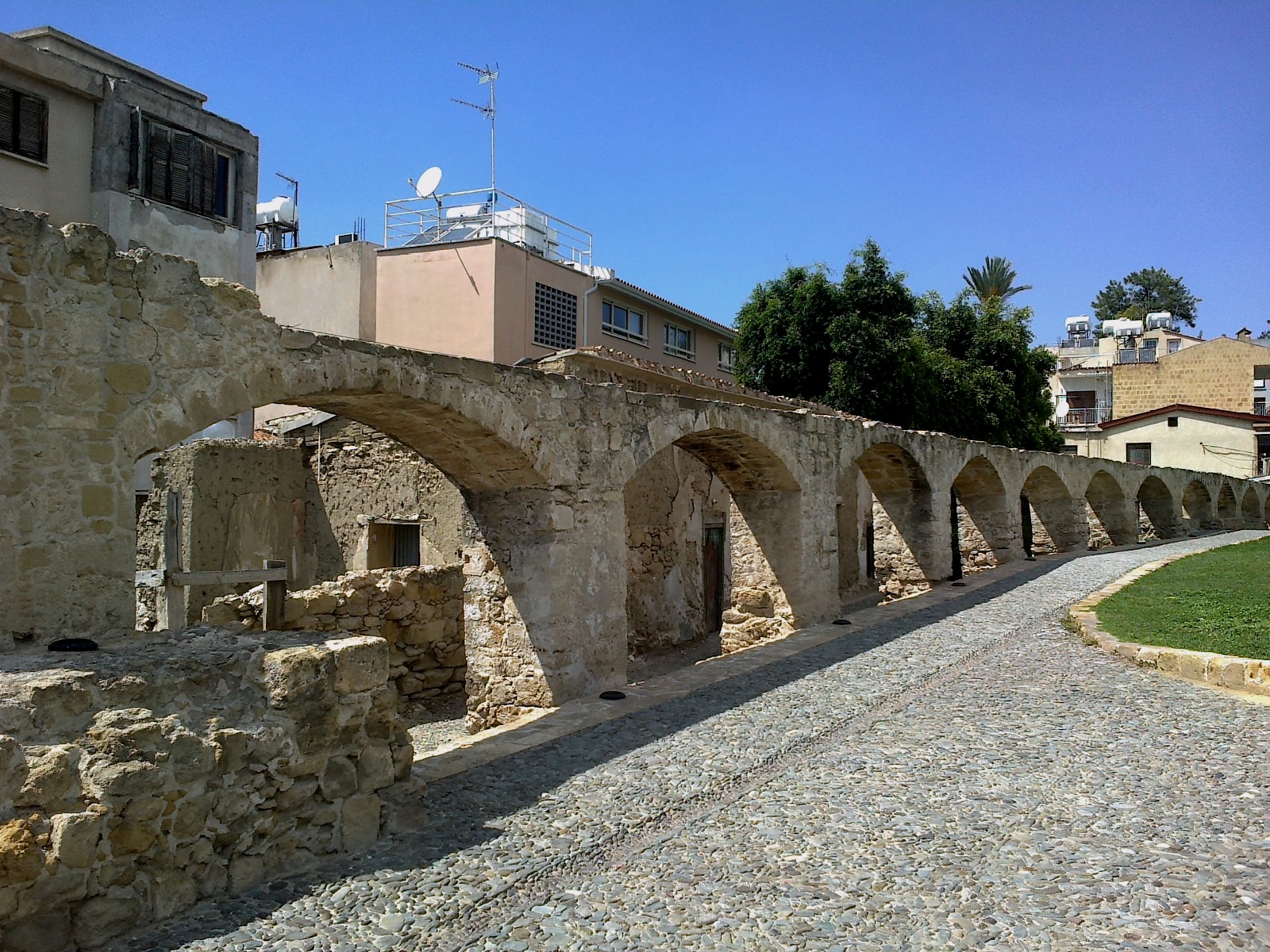
Each glance at the Nicosia Aqueduct reveals the intricate carvings adorning its arches, depicting a symphony of flowers, animals, and mesmerizing geometric patterns. These delicate motifs showcase the artistic finesse of the era, adding an extra layer of charm to this already enchanting landmark.
Conveniently situated in the center of Nicosia, near the iconic Eleftheria Monument, the Nicosia Aqueduct has become a beloved destination for tourists seeking to soak in the city's rich cultural heritage. As they explore this historic treasure, they also pay homage to the Ottoman legacy that once shaped the landscape of Cyprus.
Fascinating facts about the Nicosia Aqueduct further add to its allure. Stretching approximately 1.5 kilometers, this engineering marvel comprises an astounding 106 arches, with the highest arch soaring to an impressive height of 25 meters. The aqueduct's historical significance as an Ottoman creation, built in the 16th century, further enhances its appeal, capturing the imagination of history enthusiasts and curious travelers alike.
In a world where modernity often overshadows the past, the Nicosia Aqueduct stands as a testament to the timelessness of architectural brilliance. As you wander through its grand arches and trace the water channels, you'll embark on an unforgettable journey through history, marveling at the legacy left behind by the Ottoman Turks.
When in Nicosia, be sure to add the Nicosia Aqueduct to your must-visit list. A captivating blend of art, history, and cultural heritage, it promises to leave an indelible impression on your heart and mind.
Hagia Sophia
The Hagia Sophia in Cyprus stands as a resplendent testament to the beauty of Byzantine architecture. This awe-inspiring church, built in the 12th century by the ruling Lusignans, holds a cherished place in the heart of Nicosia, the vibrant capital of Cyprus.
The architectural elements of the Hagia Sophia are nothing short of extraordinary. Its most striking feature is the grand dome, an impressive 60 meters in diameter and soaring to a height of 25 meters. This magnificent dome finds support from pendentives, unique triangular structures that ingeniously transfer the dome's weight to the four sturdy pillars below.
Crafted from limestone and marble, the Hagia Sophia's walls exude a timeless elegance. Within the church's interior lies a treasure trove of exquisite mosaics, masterfully depicting captivating scenes from the Bible. Remarkably well-preserved, these mosaics provide a vivid window into the artistic splendor of the Byzantine era, offering a captivating glimpse into the culture and creativity of the time.
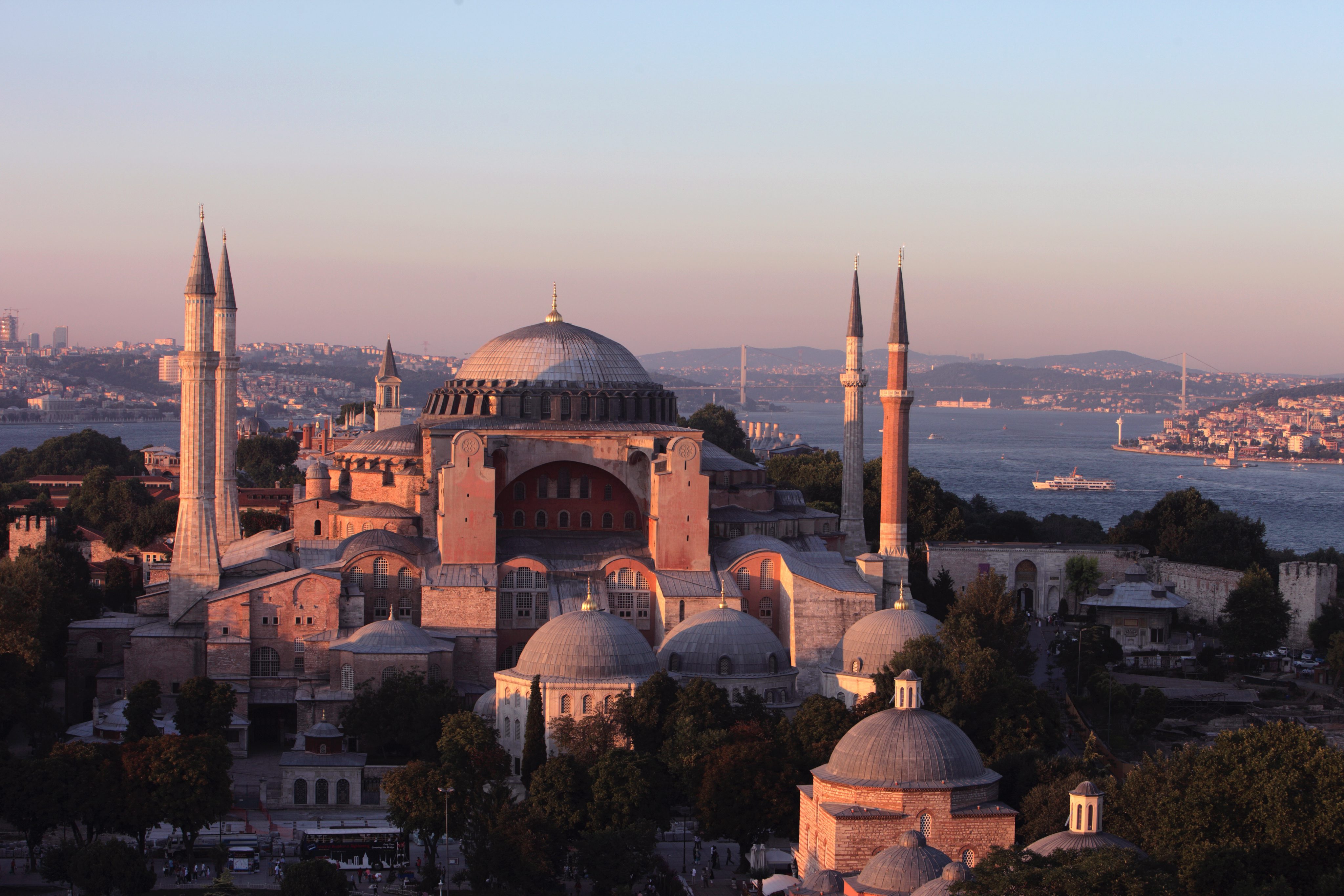
Beyond its iconic dome and intricate mosaics, the Hagia Sophia boasts a host of other captivating architectural elements. A welcoming narthex beckons visitors at the church's entrance, while an alluring apse, a semi-circular recess, graces the eastern end. The central aisle, known as the nave, guides visitors through the church's grandeur, flanked by side aisles on either side. The transept, a cross-shaped section of the church, adds an element of uniqueness to the architectural layout.
Adding to the church's rich history, four minarets were incorporated in the 16th century, during its conversion into a mosque. The juxtaposition of these Islamic architectural elements with the Byzantine grandeur creates a captivating blend of cultures and histories, making the Hagia Sophia even more fascinating.
As a designated UNESCO World Heritage Site, the Hagia Sophia draws visitors from around the globe, all eager to experience its cultural and historical significance. For architecture enthusiasts and history buffs, this splendid church offers a rare glimpse into the artistic achievements and cultural heritage of Cyprus.
Further, the pendentives supporting the dome represent a hallmark of Byzantine architecture, showcasing the ingenious use of triangular structures to uphold imposing domes. This technique is often employed in various other Byzantine structures, with the Hagia Sophia in Istanbul being a notable example.
The ingenious combination of limestone and marble in the Hagia Sophia's construction exemplifies another common feature of Byzantine architecture, gracing many other significant buildings of the period.
The mesmerizing mosaics adorning the interior of the Hagia Sophia, depicting biblical scenes, are among the most renowned in the world. Preserved with utmost care, these mosaics have emerged as a major attraction, alluring countless tourists eager to marvel at their timeless beauty.
Stepping into the Hagia Sophia in Cyprus is like stepping back in time, where art, culture, and history converge in a harmonious symphony. As you explore this cherished UNESCO site, you'll be transported to an era of artistic brilliance, leaving you with an enduring appreciation for Cyprus' cultural heritage.
Famagusta Gate
The Famagusta Gate stands proudly as one of Nicosia's most iconic landmarks, captivating visitors with its timeless beauty and historical significance. As the main gate of the city's Venetian walls, this architectural gem exemplifies the splendor of Renaissance architecture, leaving a lasting impression on all who behold its grandeur.
Constructed in 1567 during Cyprus' Venetian period, the Famagusta Gate boasts a splendid three-arched design, featuring a majestic central arch flanked by two smaller arches on either side. These arches rest gracefully upon sturdy Doric columns, adding a touch of classical elegance to the gate's structure. Crowned with a beautifully adorned pediment, the gate proudly showcases a relief of the illustrious Lion of Venice, a powerful symbol of the Venetian Republic's authority and influence.
A well-preserved masterpiece of Renaissance architecture, the Famagusta Gate is a breathtaking blend of limestone adorned with intricate carvings. Each meticulous detail showcases the skill and artistry of the craftsmen who meticulously created this splendid structure. As a popular tourist destination, it is a must-see for anyone visiting Nicosia, offering a journey through history, art, and culture.
Beyond its architectural allure, the Famagusta Gate holds immense historical importance. It witnessed the momentous entry of the Ottomans into Nicosia in 1571 during the Ottoman conquest of Cyprus, marking a pivotal event in the island's history. Throughout the British occupation of Cyprus from 1878 to 1960, the gate continued to play a significant role in shaping the city's narrative, evolving into a symbol of resilience and cultural heritage for the Cypriot people.
As you step through the Famagusta Gate, you are transported back in time to an era when Cyprus served as a vibrant crossroads of diverse cultures. The gate's rich history stands as a reminder of Nicosia's unique position in the world, where civilizations intersected, and stories converged.
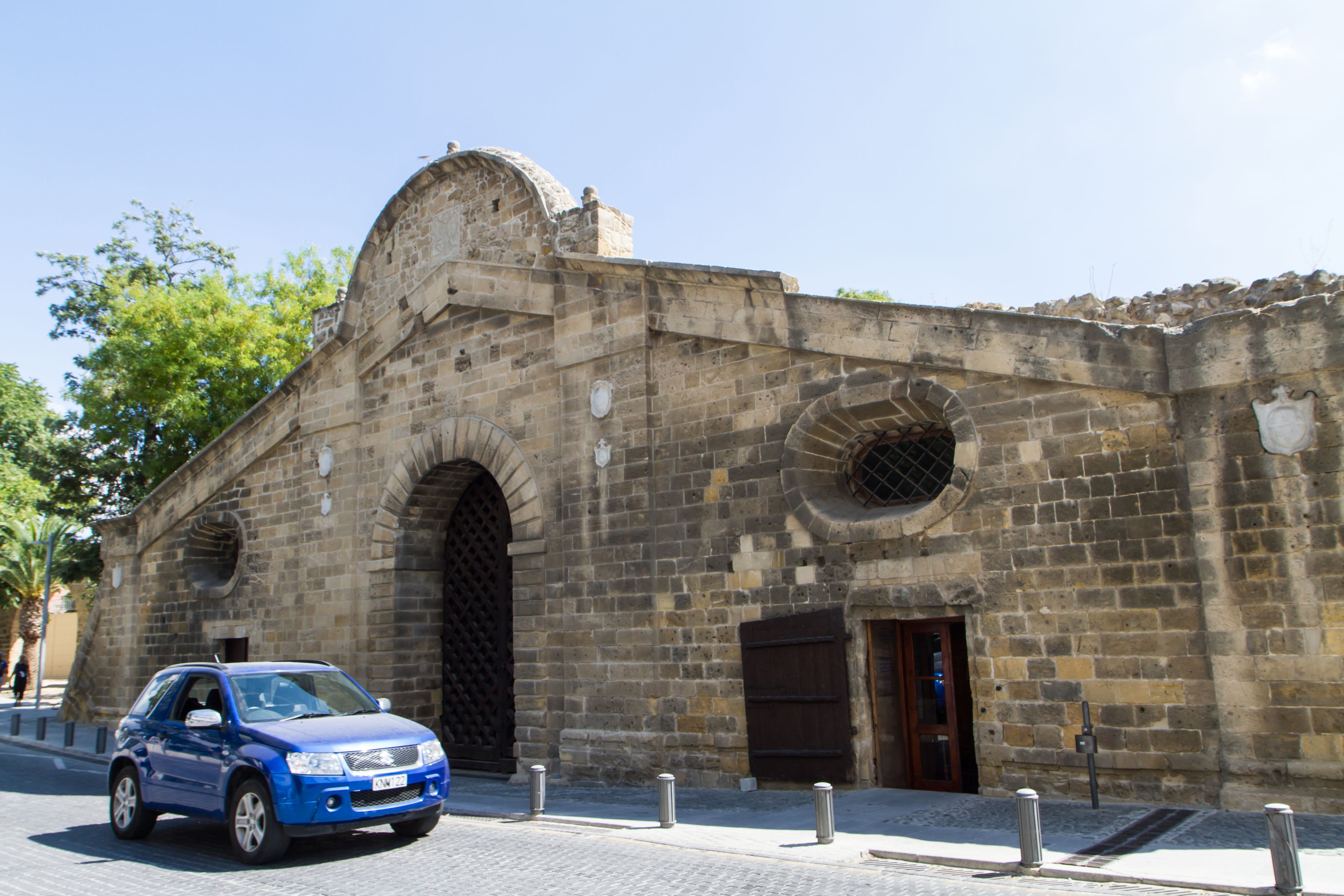
The architectural elements of the Famagusta Gate epitomize the essence of Renaissance design:
- The timeless three-arched structure showcases the classic features of Renaissance architecture, evoking a sense of grace and grandeur that has stood the test of time.
- The presence of Doric columns pays homage to the classical past of Cyprus, adding a touch of antiquity to the gate's Renaissance design.
- The Lion of Venice, depicted in a stunning relief on the gate's pediment, symbolizes the immense power and influence of the Venetian Republic during its rule over Cyprus.
- The intricate carvings adorning the gate bear testimony to the incredible skill and craftsmanship of the artisans who brought this architectural masterpiece to life.
For travelers seeking a harmonious blend of history, culture, and architectural brilliance, the Famagusta Gate offers an enriching experience like no other. Step into the past, embrace the legacy of Cyprus' diverse heritage, and witness the resilience of a city that has withstood the test of time.
Limassol Castle
Limassol Castle drawing countless tourists from far and wide, this historical gem leaves visitors spellbound with its stunning architectural wonders, steeped in a fascinating Byzantine past.
Originally constructed in the 12th century by the Byzantines, Limassol Castle underwent several transformations by the Crusaders, Franks, and Ottomans, resulting in an exquisite blend of architectural styles, including Byzantine, Gothic, and Ottoman influences.
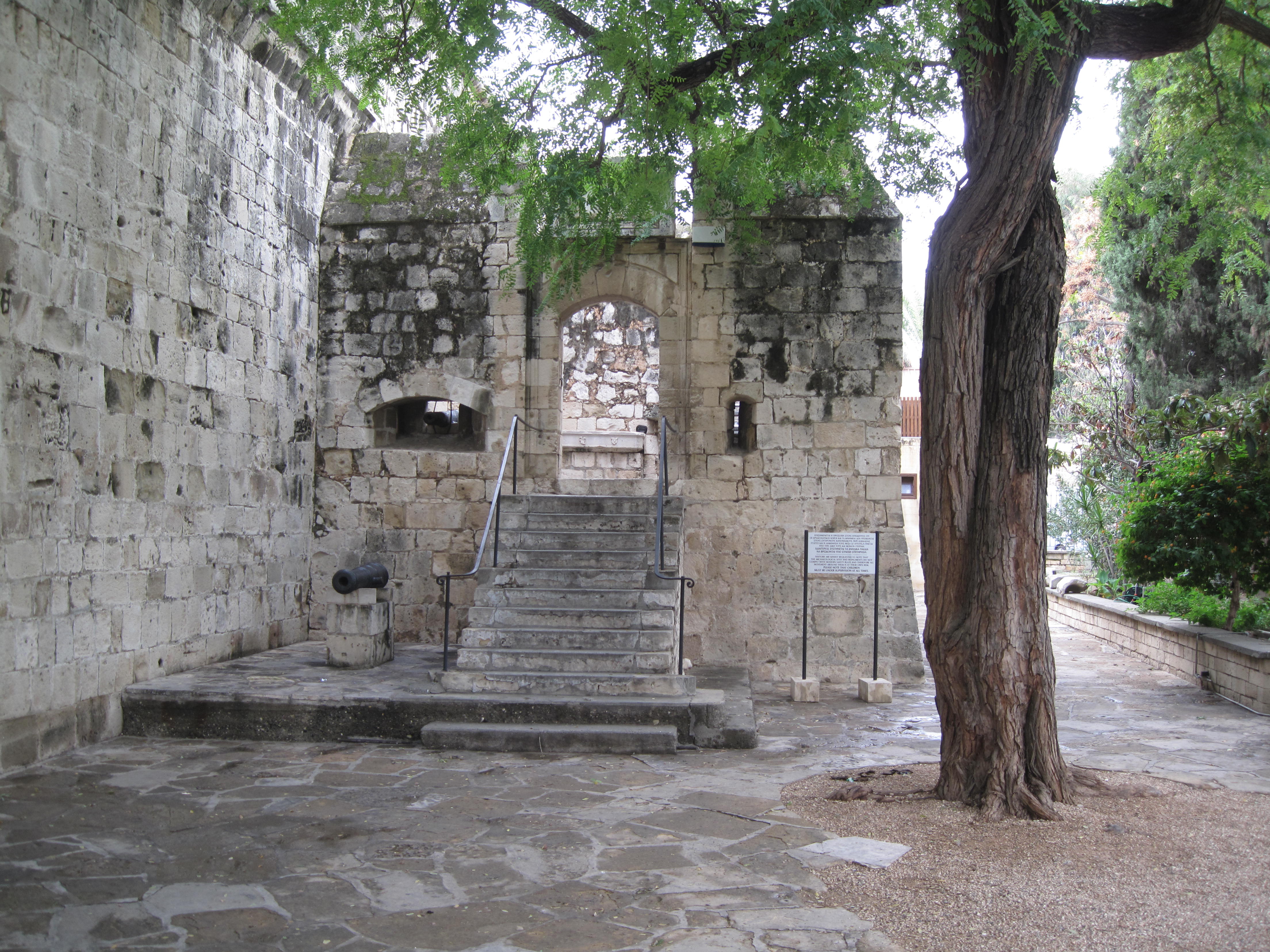
Prepare to be awestruck by these remarkable architectural features of Limassol Castle:
- Impressive Stone Walls: Admire the robust stone walls, some measuring up to an astounding 12 meters in thickness, a testament to the fortress's formidable defensive capabilities.
- Intricate Arched Doorways: Behold the intricately carved arched doorways that adorn the castle, showcasing the skilled craftsmanship of its builders.
- Towering Defense: Marvel at the towering defensive towers that once served as both guardians and watchtowers, offering unparalleled vistas of the surrounding landscape.
- Protective Moat: Imagining days of old, envision the moat that once encircled the castle, safeguarding it from potential adversaries.
Venture inside the castle to explore its historically significant interiors, which house several intriguing rooms, including the Great Hall, the Chapel, and the Dungeon. The Great Hall, once a venue for grand banquets and social gatherings, emanates an aura of regal splendor. The Chapel, a site of religious devotion, invites contemplation and reflection. Finally, the Dungeon, shrouded in mystery, whispers tales of imprisonment and confinement.
Beyond its architectural allure, Limassol Castle serves as a repository of historical treasures, housing artifacts from the Byzantine, Crusader, Frankish, and Ottoman eras. Pottery, jewelry, and weapons on display provide a tangible link to the castle's storied past. Delve into the castle's rich history at its in-house museum, where captivating exhibits narrate the enthralling chronicles of this historical edifice.
For history enthusiasts and architectural aficionados, Limassol Castle stands as an unmissable destination. The castle warmly welcomes visitors from all walks of life and graciously offers free admission.
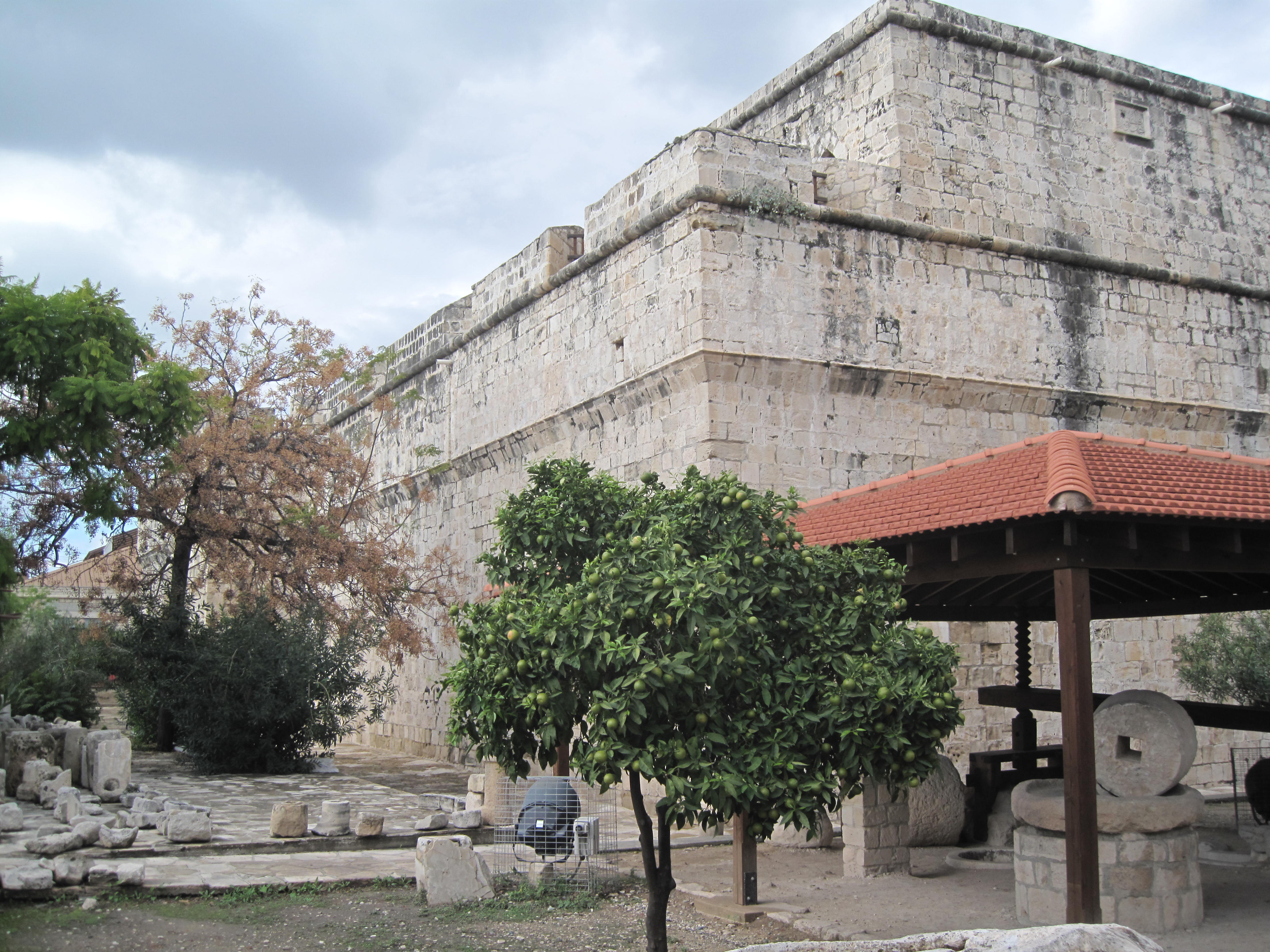
Here are some intriguing facts about Limassol Castle:
- Foundation on Byzantine Fort: The castle stands on the hallowed ground of an earlier Byzantine fort, adding an extra layer of historical significance.
- Royal Residency: Limassol Castle served as a residence for none other than King Richard I of England, famously known as Richard the Lionheart, and his queen, Berengaria of Navarre.
- Ottoman Rule: In 1571, the Ottomans conquered the castle, leaving their mark on its history and utilizing it as a prison during their reign.
- 19th-Century Restoration: During the 19th century, the castle underwent a meticulous restoration, preserving its grandeur for generations to come.
Today, Limassol Castle shines as a premier tourist destination, drawing admirers to bask in its architectural grandeur and immerse themselves in its storied past. Whether you are a history buff, an architecture enthusiast, or simply seeking a captivating experience, Limassol Castle promises to leave an indelible mark on your journey through Cyprus.
Ayia Napa Monastery
Nestled in the captivating town of Ayia Napa, Cyprus, the Ayia Napa Monastery stands tall as a revered 16th-century architectural gem. This historical landmark is not only a symbol of cultural heritage but also a magnet for tourists seeking to immerse themselves in its distinctive architectural elements.
Dating back to the 1500s, the Ayia Napa Monastery showcases an exquisite example of Byzantine architecture, captivating visitors with its remarkable features. The main building boasts a grand three-aisled basilica design, featuring a central nave flanked by two side aisles. Elegantly supported by a series of arches, the roof adds to the building's sense of lightness and openness, a hallmark of Byzantine architecture. The walls are adorned with captivating frescoes, enchanting visitors with paintings applied to wet plaster—a quintessential feature of Byzantine churches.
A true standout feature of the Ayia Napa Monastery is its magnificent bell tower. Ascending four stories high, the tower boasts a square base crowned with a graceful conical roof. The tower is adorned with an array of arches and windows, culminating with a striking cross—a symbol of spiritual significance.
Beyond the bell tower, the monastery boasts other noteworthy architectural elements that deserve attention. The cloister, a charming covered walkway embracing the courtyard, provides a serene ambiance for meditation, prayer, and reflection—a cherished feature commonly found in monasteries. The refectory, where the monks partook in their meals, exudes an air of monastic life. Decorated with frescoes or religious imagery, the refectory stands as a testament to the spiritual aspect of daily sustenance. Additionally, the library, a sanctuary of knowledge, housed the invaluable books and manuscripts meticulously preserved by the monks.
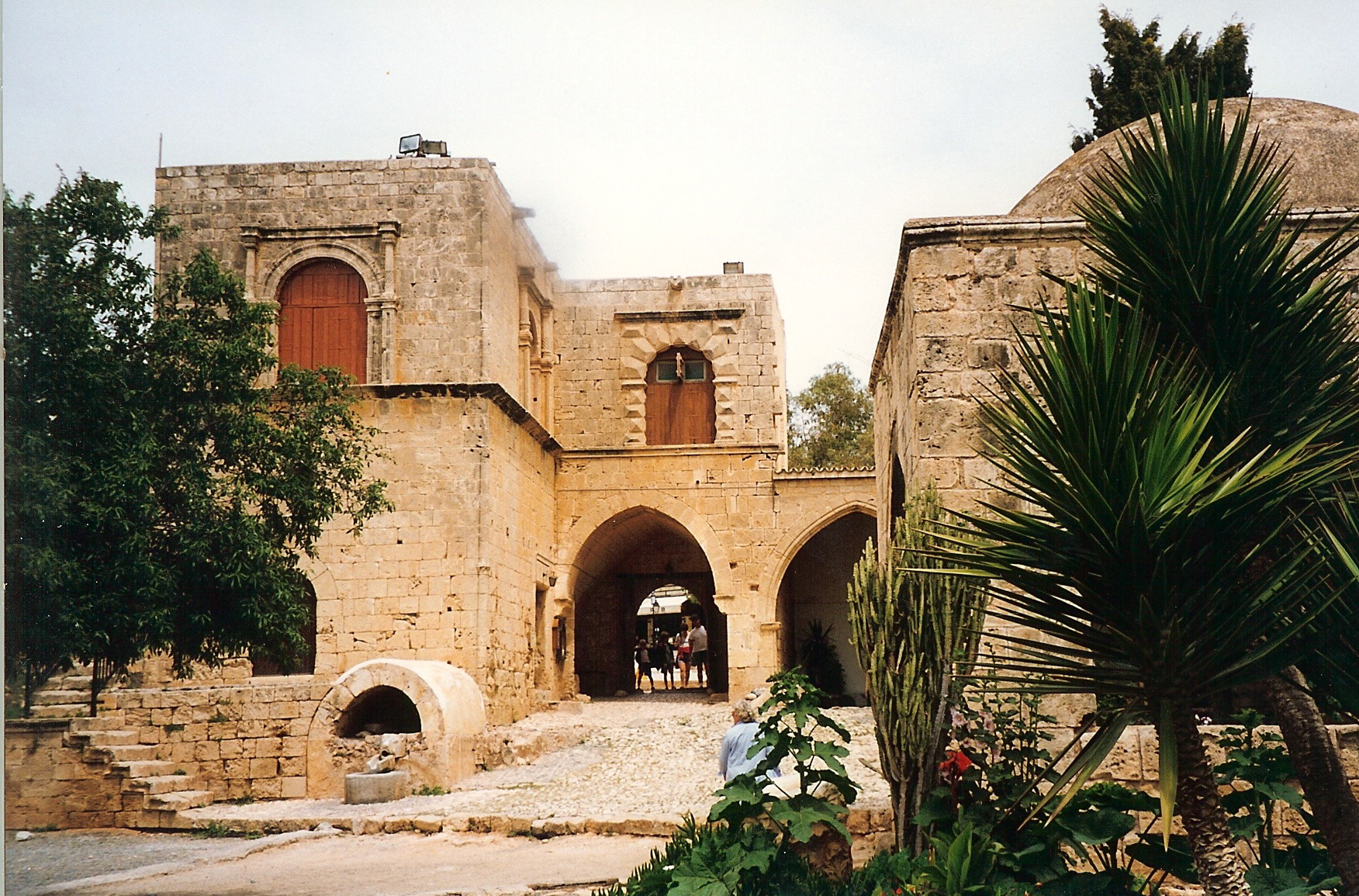
With its rich historical and architectural significance, the Ayia Napa Monastery is a captivating destination for both history enthusiasts and tourists alike. Its captivating architectural elements bear witness to the cultural heritage of Cyprus and serve as a testament to the enduring allure of Byzantine design.
Delving further into the architectural elements of the Ayia Napa Monastery:
- Three-Aisled Basilica: The main building, designed as a three-aisled basilica, with a central nave and side aisles, reflects a timeless architectural form rooted in the Roman Empire and prevalent in Byzantine churches.
- Graceful Arches: An essential element of Byzantine architecture, the series of arches supporting the roof add elegance and structural integrity to the monastery.
- Enchanting Frescoes: Adorning the walls, the frescoes offer a glimpse into the spiritual narratives and artistic expressions cherished by the Byzantine era.
- Towering Bell Tower: The four-story bell tower, a typical feature of Byzantine churches, served as a call to prayer, resonating with the faithful.
- Serene Cloister: The cloister, an oasis of tranquility, embraces the courtyard, providing a space for contemplation and spiritual communion.
- Reflective Refectory: The refectory, adorned with frescoes and religious imagery, takes visitors on a journey through monastic life and its sacred rituals.
- Knowledge-Preserving Library: The library, safeguarding books and manuscripts, embodies the essence of intellectual and spiritual pursuit within the monastery.
The Ayia Napa Monastery stands as a timeless marvel, beckoning travelers to witness its historical splendor and immerse themselves in the cherished cultural heritage of Cyprus.
Archbishop's Palace
The Archbishop's Palace in Nicosia, Cyprus, stands as a grand testament to the magnificence of Baroque architecture. Erected in the 17th century under the visionary Archbishop Makarios II, it has since served as the esteemed seat of the Orthodox Church of Cyprus, an enduring symbol of religious significance.
This three-story architectural marvel boasts a spacious central courtyard, showcasing a striking limestone exterior adorned with a captivating array of architectural elements. Among them are the majestic Doric columns, characterized by their plain shafts and capitals, exuding an air of classical elegance.
The palace's facade features eye-catching pediments, triangular gables often embellished with intricate sculptures or reliefs, adding an artistic touch to the building's outer appearance. The picturesque balustrades, railings crafted with a series of short pillars, gracefully adorn balconies and staircases, offering a sense of refined beauty.
Step inside the Archbishop's Palace to revel in its equally impressive interior. The ornately decorated rooms, each exuding opulence, house a wealth of history and culture. The library, a treasure trove of knowledge, preserves ancient texts and cherished manuscripts, while the museum showcases cherished artifacts of immense cultural value.
Amidst the architectural splendors, the Archbishop's Palace boasts a crowning glory - its resplendent copper dome. Gracefully adorned with patterns or mosaics, domes such as this are customary in religious edifices, imbuing the structure with an aura of sacred significance. The dome, topped with a reverent cross, stands proudly visible from every corner of Nicosia, an iconic symbol of the Orthodox Church of Cyprus.
A noteworthy addition to the palace is its majestic clock tower, a prominent feature within the courtyard. Crowned with a bell, the clock tower serves as a beloved tourist attraction, evoking a sense of nostalgia as it chimes the hours, guiding both locals and visitors through the passage of time.
Recognizing its immense cultural significance, the Archbishop's Palace proudly holds the distinguished title of a UNESCO World Heritage Site. A visit to this iconic landmark is a must for enthusiasts of Baroque architecture and those captivated by the rich history of the Orthodox Church.
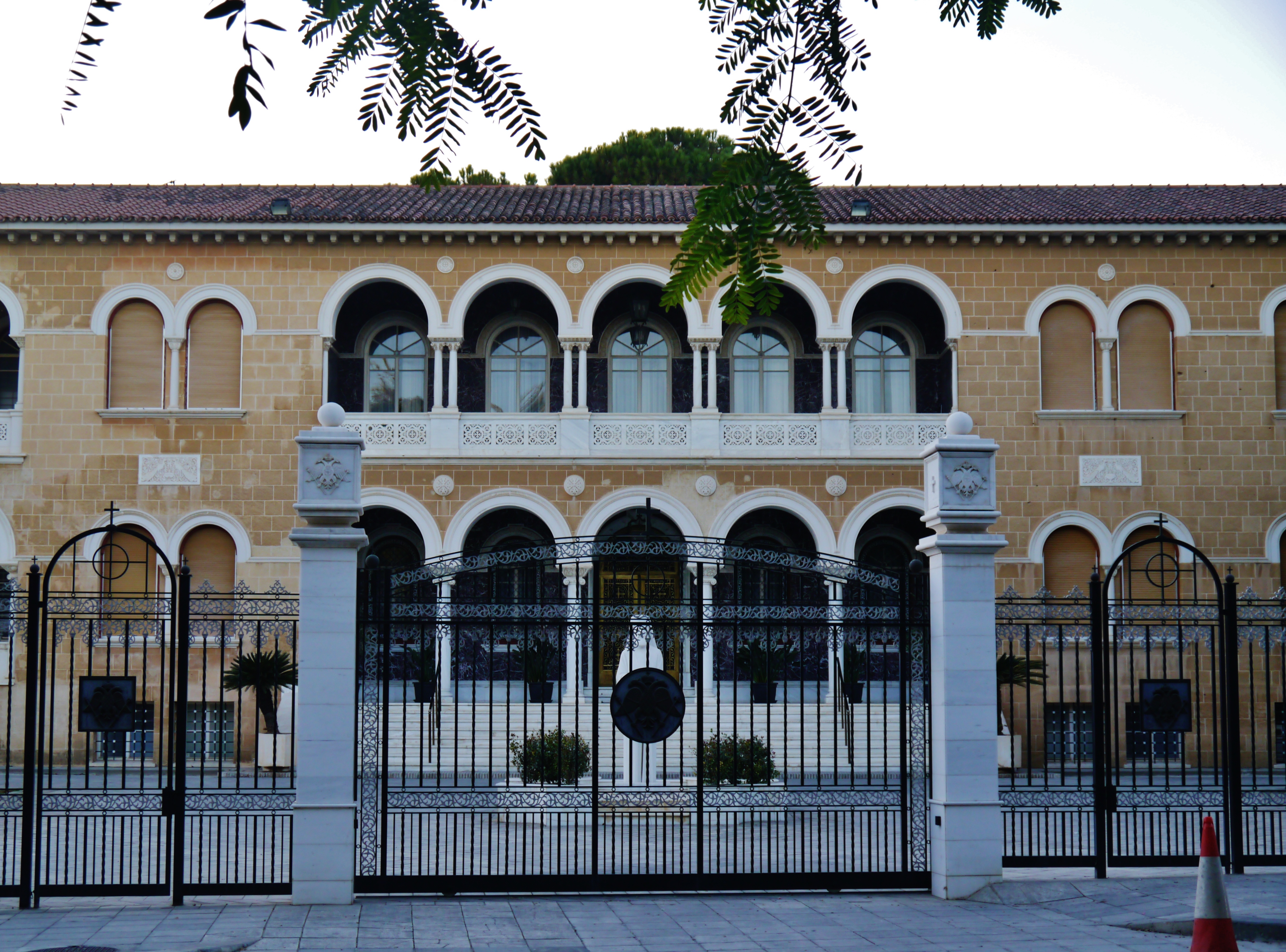
Embrace the Specific Architectural Elements of the Archbishop's Palace:
- Doric Columns: A majestic colonnade surrounds the palace, adorned with Doric columns, celebrated for their simplicity and classical charm.
- Pediments: Gaze upon the palace's enchanting pediments, triangular gables adorned with captivating sculptures or reliefs, creating a captivating facade.
- Balustrades: Adorning balconies and staircases, the balustrades grace the palace with a touch of sophistication, composed of a series of elegantly designed balusters.
- Dome: Crowned with a copper dome, the palace showcases the classic hemispherical roof often found in religious buildings, featuring elaborate patterns or mosaics.
- Clock Tower: The majestic clock tower, a later addition to the palace, stands as a prominent feature in the courtyard, topped with a bell to keep time.
The Archbishop's Palace in Nicosia stands as a true marvel, a living testament to the artistry and skill of its architects and builders. A treasure trove of history and culture, it stands as a poignant reminder of Cyprus's rich and captivating past. For admirers of architectural grandeur and cultural heritage, the Archbishop's Palace beckons, offering an unforgettable journey into the opulence of Baroque design.
Paphos Town Hall
Paphos Town Hall architectural masterpiece, built in 1959, graces the heart of Paphos Old Town and stands as a captivating attraction for tourists from near and far.
A sight to behold, the Town Hall boasts a refined two-story structure with an elegant rectangular plan. Its facade is divided into three sections, with the central section towering above the rest. Crowned by a pediment adorned with a captivating relief of the town's coat of arms, the central section exudes an air of stately grace. Flanking it are two side sections, each topped with triangular pediments, adding a touch of timeless elegance to the building.
Crafted from durable limestone, the Town Hall's design showcases the iconic Doric columns adorning its ground floor. These majestic columns lend a sense of grandeur to the building while providing vital support to the architrave, frieze, and cornice. Adding to its visual allure, the Doric columns also serve as decorative elements, enhancing the entrance to the Town Hall with a touch of classical splendor.
Stepping inside, you'll discover a well-organized interior, featuring various rooms, including the esteemed City Council Chamber, the Mayor's Office, and the Municipal Library. Among these rooms, the City Council Chamber shines as the most impressive space within the building. Adorned with elegant Doric columns and crowned with a coffered ceiling, the chamber exudes an aura of dignified elegance and architectural finesse.
Paphos Town Hall stands as a remarkable testament to the brilliance of Neoclassical architecture in Cyprus. The building's harmonious proportions and use of iconic Doric columns create an unforgettable visual impact, leaving visitors enchanted by its timeless charm. A cherished destination for tourists, the Town Hall proudly represents the rich architectural heritage of Cyprus.
A Closer Look at the Architectural Elements of Paphos Town Hall:
- Doric Columns: The majestic Doric columns grace the ground floor of the Town Hall, providing both support and decorative flair to the building's facade.
- Rectangular Plan: The Town Hall's two-story structure showcases a symmetrical and balanced rectangular plan, a hallmark of Neoclassical architecture.
- Pediments: Crowned with three pediments, the Town Hall captivates with its central pediment, adorned with a relief of the town's coat of arms.
- Limestone: Crafted from enduring limestone, the Town Hall remains resilient against weathering, ensuring its preservation for generations to come.
- Coffered Ceiling: The City Council Chamber boasts an alluring coffered ceiling, featuring sunken panels that add depth and interest to the room.
The beauty and preservation of Paphos Town Hall make it a true gem of Neoclassical architecture, offering visitors a captivating glimpse into the architectural heritage of Cyprus.
Modern Interpretations
The architectural landscape of Cyprus has experienced a shift towards modernism in recent decades, with architects seeking to create innovative designs that combine functionality, sustainability, and cultural context. Drawing inspiration from the traditional architecture of the Middle East, Cypriot architects infuse their creations with elements that pay homage to the region's rich heritage.
One striking example is the Arab Ahmet Mosque in North Nicosia.This mosque stands as a contemporary interpretation of Islamic architecture, blending traditional elements with modern aesthetics. The design of the mosque incorporates elements such as geometric patterns, arched entrances, and decorative motifs that are reminiscent of the architectural vocabulary found in Middle Eastern mosques. However, the architect has introduced a modern twist by using clean lines, minimalist forms, and contemporary materials. The result is a mosque that preserves the essence of Islamic architecture while embracing a contemporary design language.
The Arab Ahmet Mosque serves as a testament to the adaptability of architectural traditions. By reinterpreting traditional elements, Cypriot architects bridge the gap between past and present, creating structures that are both culturally relevant and visually striking. This contemporary approach not only pays homage to the heritage of the Middle East but also contributes to the architectural identity of Cyprus.
Contemporary Cypriot architects recognize the importance of preserving cultural identity while embracing innovation. By drawing inspiration from Middle Eastern architecture, they create designs that are not only visually appealing but also pay homage to the historical and cultural ties between Cyprus and the Middle East.
Cyprus's architectural landscape is a testament to its rich historical and cultural tapestry. The island's geographical proximity and historical connections to the Middle East have deeply influenced its architectural heritage. From traditional Cypriot houses to religious structures, fortifications, and palaces, Middle Eastern architectural elements and design principles are interwoven throughout the island's built environment. This architectural legacy continues to shape contemporary practices, emphasizing the importance of preserving and celebrating Cyprus's diverse architectural heritage for future generations.











